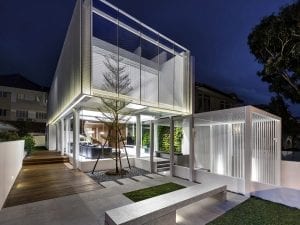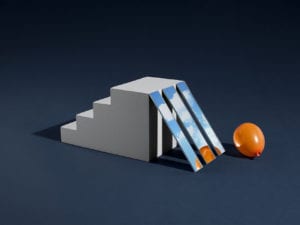The concrete poetry movement of the 1950s and 1960s is one of the 20th century’s most influential and dynamic of cultural avant-gardes, moving across the spheres of poetry, visual arts, sound art, graphic design and typography. Emerging from remarkably diverse traditions and truly international in nature, the different strands of work produced under, in response to and in some cases in opposition to, the banner of concrete poetry constitute works that are alternately playful, abstract and experimental, but always challenging and provocative. As influential and radical concrete poet Bob Cobbing put it in Concerning Concrete Poetry, “one can, by empathy, enter into the spatial rhythm of a visual poem or one can give it full muscular response.”
A new exhibition at the Lighthouse Gallery as part of Outside-in / Inside-out Festival, supported by AHRC Digital Transformations Theme Leader Fellow, Design & the Concrete Poem, explores the centrality of design and typography to the movement. Curator Bronac Ferran has compiled a remarkable survey of the different directions and trajectories on which concrete poets embarked. Brazilian poet and member of the Noigandres group, Décio Pignatari, declared that “the poet is a language designer”, and Ferran focuses on concrete poets who take that definition of poetry to heart, emphasising the connections between the physical act of writing and typography.
The work o i l by Hansjörg Mayer, from 1965, reveals the graphic elements that fuel, lubricate and underpin our language: the poster is made entirely of circles and lines. Of course, there is also a political resonance to the work: the word “oil” and it’s constituent parts “o”, “i”, “il”, “oi” etc is anything but arbitrary and disengaged, even as the language tumbles and dissolves in a slick sheen of type on the white space of the page, suggesting at once a downward and upward arrow. The exhibition also includes a display of Mayer’s futura series of prints and other portfolios made between 1965 and 1967, which included poems by Thomas A. Clark, Edwin Morgan, Jonathan Williams, Dick Higgins and Ian Hamilton Finlay.
Also included in the show are Stephen Bann’s Amber Sand works, which were first shown outdoors on the lawn of Brighton Pavilion during the Brighton Festival of Poetry which he curated in 1967. Many works will also be shown from the extensive archive of Bob Cobbing, one of the foremost figures in the concrete and sound poetry movement who was not only an important poet but who provided a vital stage for many established and emerging poets to be read and seen through the magazine Writers Forum and the bookshop Better Books, which he managed.
The exhibition also includes works by major women concrete poets, such as Ilse Garnier, an important and underrated figure who worked with breath, sound and text and Lily Greenham, a sound and visual poet whose work has been rarely heard or seen since the Sixties but is now at last receiving recognition. Liliane Lijn, US born London-based visual poet (who currently has three works on show at the Beat Generation exhibition at the Centre Pompidou in Paris) is also included in the show with a work called Immaterial Alphabet – displayed in a light-box. A digital video of some of Lijn’s kinetic poetry will also be on display in the gallery. Works have been loaned from important personal collections in the UK and in Germany especially for this exhibition. The exhibition also includes rarely seen catalogues, posters and experimental typography journals from a fascinating pre-digital period.
What emerges in Design & the Concrete Poem is a fascinating survey of major figures within the movement and an opportunity to see how the works evolved in a wider context of experiments with typography. It’s also a show that explores the multi-directionality of concrete poetry and its relation to movement. While some works focus on pulling form apart, breaking down words into letters and letters into fragments as well as into codes and signs, others highlight the materiality and physicality of the text and on the space occupied by single words, making these into images and exposing their graphic form.
Colin Herd
Design & The Concrete Poem, Lighthouse: Scotland’s Centre for Design, Glasgow. 28 September – 6 October. Part of Outside-in / Inside-out Festival (outsidepoetryfestival.wordpress.com)
Credits:
1. Hansjorg Mayer. Courtesy of Outside-in / Inside-out Festival.





